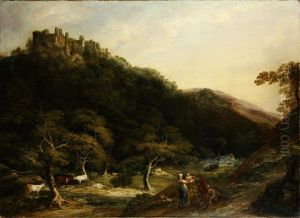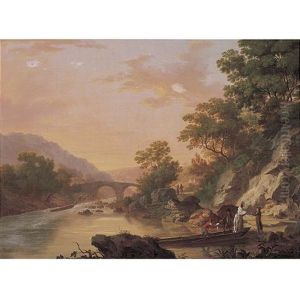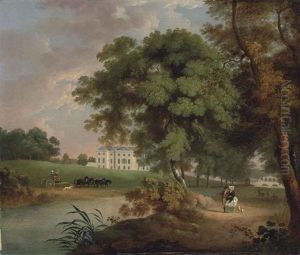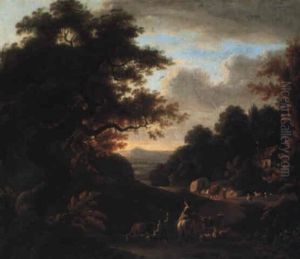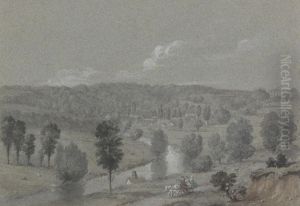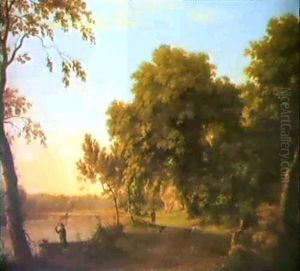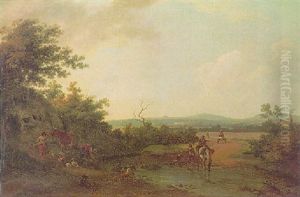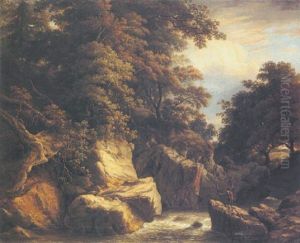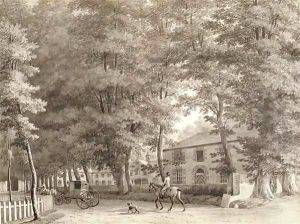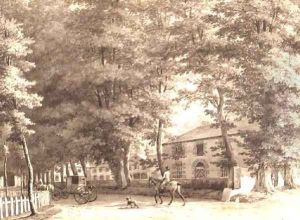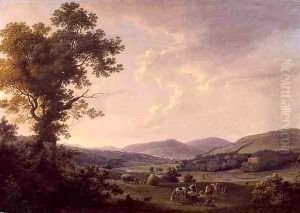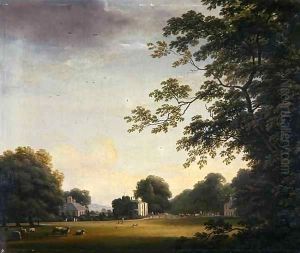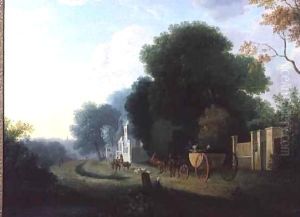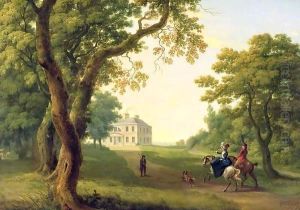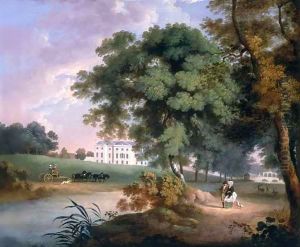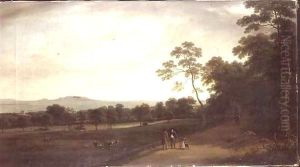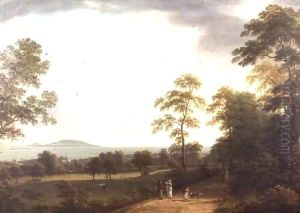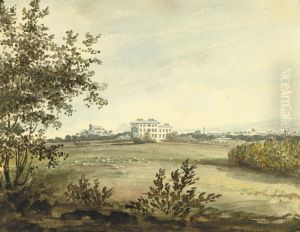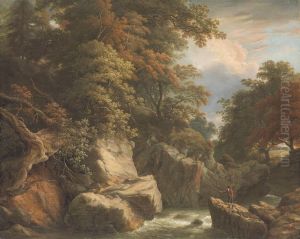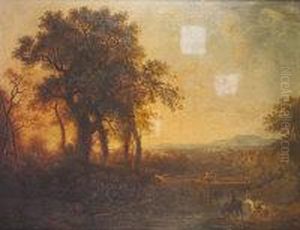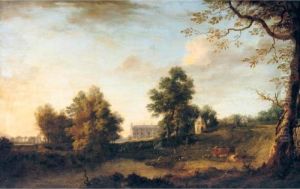William Ashford Paintings
William Ashford was a prominent British landscape painter, primarily known for his work in Ireland during the 18th century. Born in Birmingham, England, in 1746, Ashford moved to Dublin, Ireland, around 1764 where he would spend the majority of his life and establish his career as an artist.
Ashford became one of the first English artists to focus on the Irish landscape, which had been somewhat neglected by painters of the time. He is often considered a pioneer in the field, and his work played a significant role in shaping the visual representation of Ireland's countryside during the late 18th and early 19th centuries.
Early in his career, Ashford worked as a draughtsman for a firm of land surveyors, which honed his skills in observing and depicting landscapes with accuracy. His attention to detail and ability to capture the serene beauty of the Irish scenery soon garnered the attention of the local gentry, many of whom became his patrons.
In 1772, he was a founding member of the Society of Artists in Ireland and later became the president of the organization. His landscapes were characterized by their detailed rendering and often included ancient ruins or pastoral figures, blending the picturesque with the sublime.
Ashford's paintings are significant not only for their aesthetic quality but also because they document the changing Irish landscape during a time of agricultural and social transformation. He often depicted the estates of the Irish aristocracy, highlighting the grandeur of their parks and gardens.
Despite his success, Ashford remained relatively conservative in his artistic style, which was deeply rooted in the classical landscape tradition. He did not readily adopt the more romantic tendencies that became popular at the end of the 18th century.
William Ashford passed away in 1824, leaving behind a legacy of work that provides a valuable historical record of Ireland's natural and cultivated environments. His paintings are now held in many public and private collections, and they continue to be appreciated for their tranquil beauty and historical significance.
